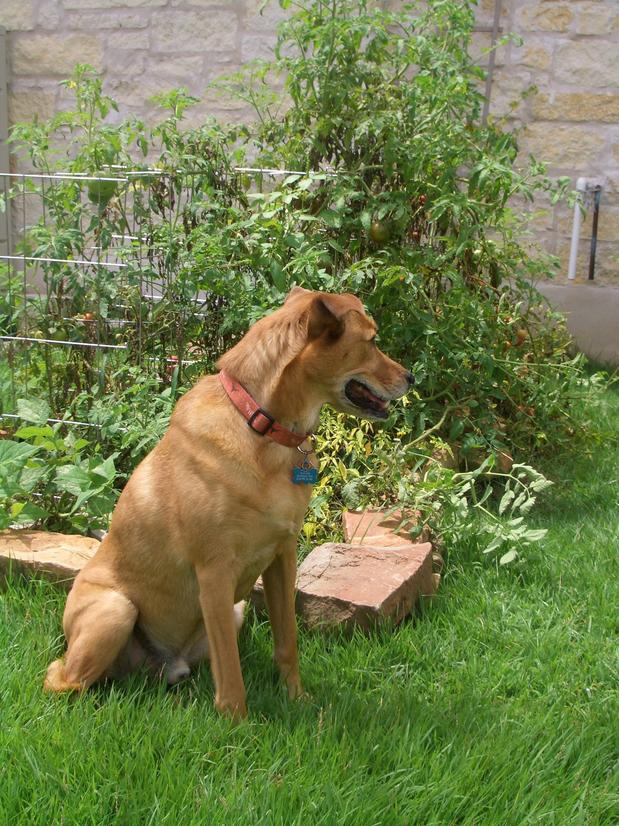Vines give gardens vertical interest


Gripping and twirling their tendrils upward, searching for the sky, vines decorate our fences, pergolas and walls, adding vertical interest to our gardens.
Vines provide screening, shade, and color and they also attract birds, butterflies and bees to the garden. There are many beautiful annual and perennial vines for gardeners to choose from here in Central Texas.
Vines adhere themselves to various surfaces by either twining, grasping tendrils or adhesive disks.
Twining vines wrap themselves around a plant or support and grow upward in a spiral form, making them great for columns, trellises or obelisks. Honeysuckle, crossvine and wisteria all twine.
Plants with grasping tendrils wrap themselves around trellises and support structures. They do less damage and are less powerful than twining vines. Passionflower, morning glories and clematis have tendrils.
Plants that use disk-like features like suction cups are able to climb up walls and fences without the use or trellises or wire. They are able to attach themselves to textured surfaces but can do a great deal of damage over time. Boston ivy, Trumpet vine and Virginia creeper climb in this manner.
Annual vines
Morning glory vine
These staples – vestiges from Grandma’s cottage garden — come in a rainbow of colors and open with aplomb in the morning sun. Best sown in about April after the danger of frost has passed, my favorite variety is Grandpa Ott’s, a deep bluish-purple color that provides a rich and unique color in the garden.
Cypress vine
A relative of the morning glory, Cypress vine couldn’t be more different. Lacy, fern-like foliage weaves a delicate but invasive web adorned with endless tiny red trumpet-shaped blooms that will cover any surface in record speed. And then come back with thousands of seedlings for years thereafter. This vine is great for an area where it’s easy to manage the errant seedlings and you look forward to seeing it come back year after year. The seedlings are simple to pull out or mow over as they are very delicate, unlike some vine volunteers.
Hyacinth bean vine
Covered with bright purple bean pods and delicate lavender and purple blooms in midsummer, this vine is drought tolerant and a fast grower. It is almost always an annual here, so save the purple pods and their seeds to replant in the spring after the danger of frost has passed.
Perennial Vines
Trumpet vine
Not for the faint of heart, trumpet vine is an aggressive, fast-growing climber that not only grows upward and outward, but also sends out adventitious roots, or runners that can take over your garden. It grows by grasping and burrowing into textured surfaces and can be difficult to remove. Best planted on a strong structure with plenty of space to expand, trumpet vine has dramatic, trumpet shaped blooms that attract hummingbirds and bees and its woody stems provide an interesting structural element to the garden. A less aggressive form of trumpet vine is ‘madame galen.’ It will grow in sun or part shade and can be found in shades of yellow-gold to peach to orange.
Confederate Jasmine
Also called Star Jasmine, this dense vine makes an excellent screen and is covered in small, fragrant white blooms throughout the spring. Its beautiful scent will fill your garden. It is drought tolerant and will do well in sun to part shade.
Wisteria
Known for its old-world charm and ability to embrace even the largest pergolas and gazebos, wisteria’s gently-arching lavender blooms attract pollinators and infuse the garden with the scent of spring. While the two Asian species can be invasive, American, or Texas, wisteria is an excellent non-invasive native variety.
Passionflower vine
Likes full sun or dappled shade and is estimated to come in between 400 to 500 different varieties with 9 of them native to the U.S. Be forewarned – the leaves are a favorite food source for many butterflies and moths and they can take a real bite out of your plant if it’s young. With a more established, larger plant, it’s usually ok to share it with the caterpillars in exchange for the beautiful butterflies and moths they will produce. Many are very invasive, requiring an open or easily maintained space where new vines can be left to come up from the roots or can easily be removed.
Evergreen vines
Crossvine
A tendril climber that can reach amazing heights, crossvine can most often be found in tangerine, yellow and red. Tangerine Beauty is a common variety grown in Central Texas. Mine has not only scaled our wrought iron fence, but has found its way to the top of the oak next to it. It makes for a stunning display in the spring when it bursts into bloom. It can grow in sun or shade. It is semi-evergreen, meaning mine holds onto about ½ of its leaves in the winter.
Texas coral honeysuckle
This drought-tolerant vine will do well in part sun to part shade. Its coral blooms attract hummingbirds. This variety is not invasive like the common yellow honeysuckle. It’s also deer resistant.
Local Landscape Designer and Garden Coach Diana Kirby provides landscaping tips at http:/www.dianasdesignsaustin.com and writes a garden blog at https://www.dianasdesignsaustin.com


